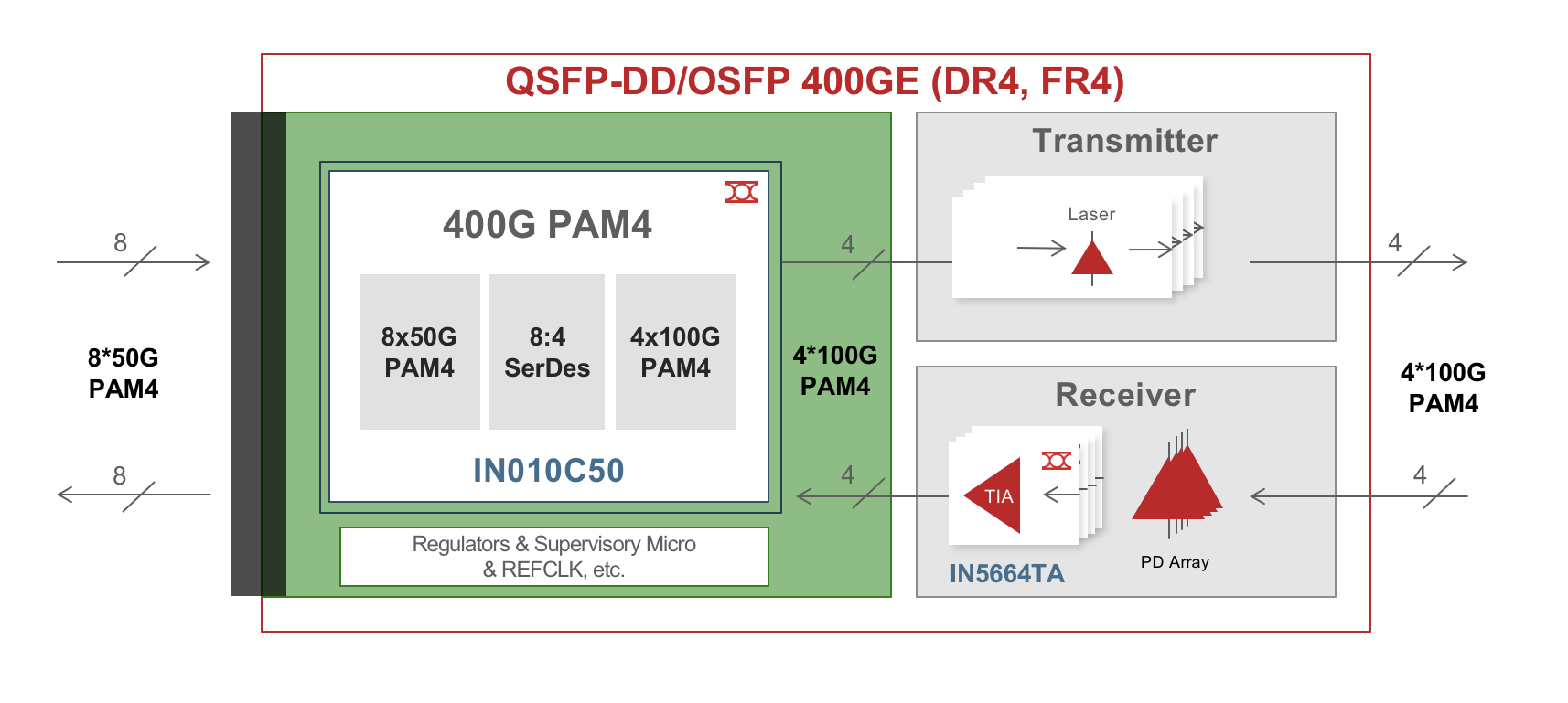Inphi adds a laser driver to its 100-gigabit PAM-4 DSP
 Wednesday, February 27, 2019 at 10:22AM
Wednesday, February 27, 2019 at 10:22AM Inphi has detailed its second-generation Porrima chip family for 100-gigabit single-wavelength optical module designs.
 Source: Inphi
Source: Inphi
The Porrima family of devices is targeted at the 400G DR4 and 400G FR4 specifications as well as 100-gigabit module designs that use 100-gigabit 4-level pulse-amplitude modulation (PAM-4). Indeed, the two module types can be combined when a 400-gigabit pluggable such as a QSFP-DD or an OSFP is used in breakout mode to feed four 100-gigabit modules using such form factors as the QSFP, uQSFP or SFP-DD.
The Gen2 family has been launched a year after the company first announced the Porrima. The original 400-gigabit and 100-gigabit Porrima designs each have three ICs: a PAM-4 digital signal processor (DSP), a trans-impedance amplifier (TIA) and a laser-driver.
 400 Gigabit,
400 Gigabit,  400G DR4,
400G DR4,  400G FR4,
400G FR4,  DSP,
DSP,  Inphi,
Inphi,  PAM-4,
PAM-4,  Porrima,
Porrima,  Siddharth Sheth in
Siddharth Sheth in  OFC 2019
OFC 2019  Print Article
Print Article 





